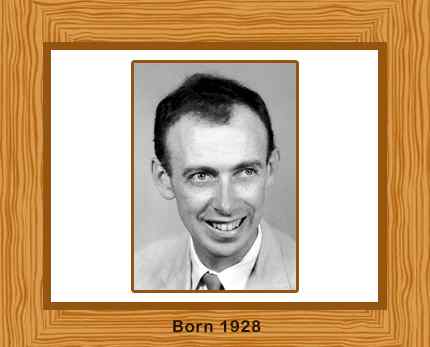
Born 1928
James Dewey Watson is an American geneticist and biophysicist. He is noted for his decisive work in the discovery of the molecular structure of DNA, the hereditary material associated with the transmission of genetic information. He shared the Nobel Prize for Physiology or Medicine with Francis Crick and Maurice Wilkins in 1962.
Early Life and Education:
James Watson was born on 6 April in 1928 in Chicago, Illinois. His father was a tax collector of Scottish ancestry. An only son, as a child he loved bird watching with his father.
He attended the University of Chicago, earning a degree in zoology in 1947. Watson was awarded a scholarship to Indiana University where he received his doctorate in 1950 for his work on the effects of X-ray radiation on replication of bacteriophage viruses.
Career Path:
Watson then moved to Copenhagen, continuing with his virus research. Watson became interested in the deoxyribonucleic acid (DNA) molecule and joined a research team at the Cavendish Laboratory of the University of Cambridge with Francis Crick. Here, he made his famous discovery identifying the double helix structure of DNA.
He was appointed professor of biology at Harvard University in 1955, a position he held until 1976. His research at Harvard concentrated on RNA and its role in the transfer of genetic information.
He also became the director of Cold Spring Harbor Laboratory in New York in 1968, a position that he held for 35 years. Watson is credited with turning the laboratory into a world center for research in molecular biology.
Watson focused his research at the laboratory in exploring molecular biology and genetics in order to advance the understanding and ability to diagnose and treat cancers, neurological diseases, and other causes of human suffering.
In 1990, Watson was appointed as the Head of the Human Genome Project, a position he held for two years.
He retired in 2007 from the Cold Spring Harbor Laboratory, the same year as his fully sequenced genome was published online.
Contributions and Achievements:
James Watson gained worldwide fame and prominence as the joint author of the four scientific papers between 1953 and 1954 (which he co-wrote with fellow scientist Francis Crick) that laid down the double helical structure of deoxyribonucleic acid (DNA), a megamolecule that is the fundamental substance in the process of genetic replication. This discovery won Watson and Crick (with Maurice Wilkins) the Nobel Prize in physiology or medicine in 1962.
During the 1960s, Watson became one of the most celebrated science writers, as he published his textbook “Molecular Biology of the Gene” in 1965 and his best-selling autobiographical book “The Double Helix” in 1968. Watson became the undisputed leading voice in the whole of American science. He epitomized the scientific creativity in 20th century science, giving rise to molecular biology and its two applied offsets; biotechnology and the “Human Genome Project”.
Watson married Elizabeth Lewis in 1968 and they had two sons, Rufus and Duncan.
His autobiography, a candid and entertaining memoir, “Avoid Boring People: Lessons from a Life in Science”, published in 2007, is also filled with practical advice for those starting out their academic careers.

No comments:
Post a Comment
I Am Wating For Your Comments